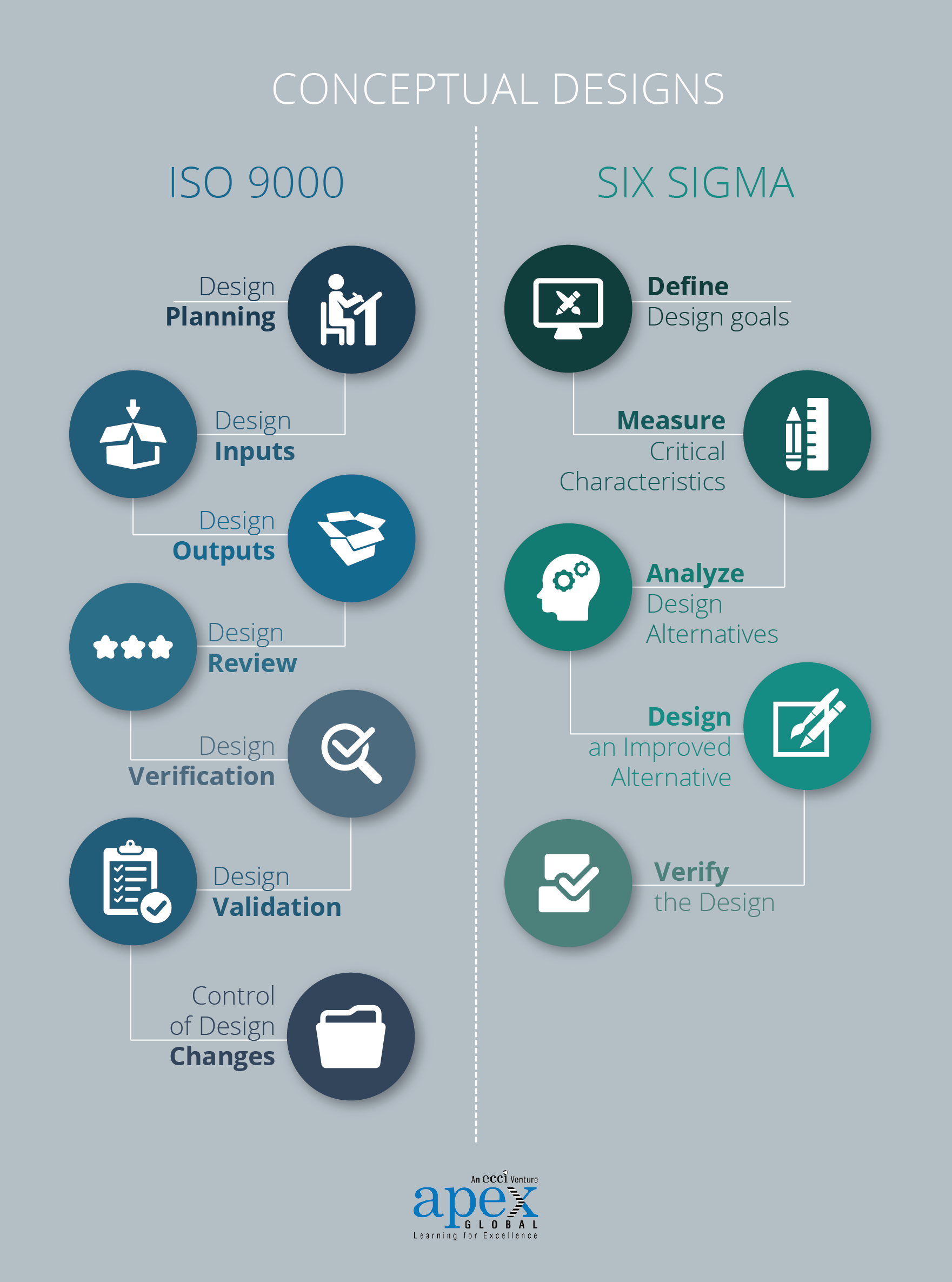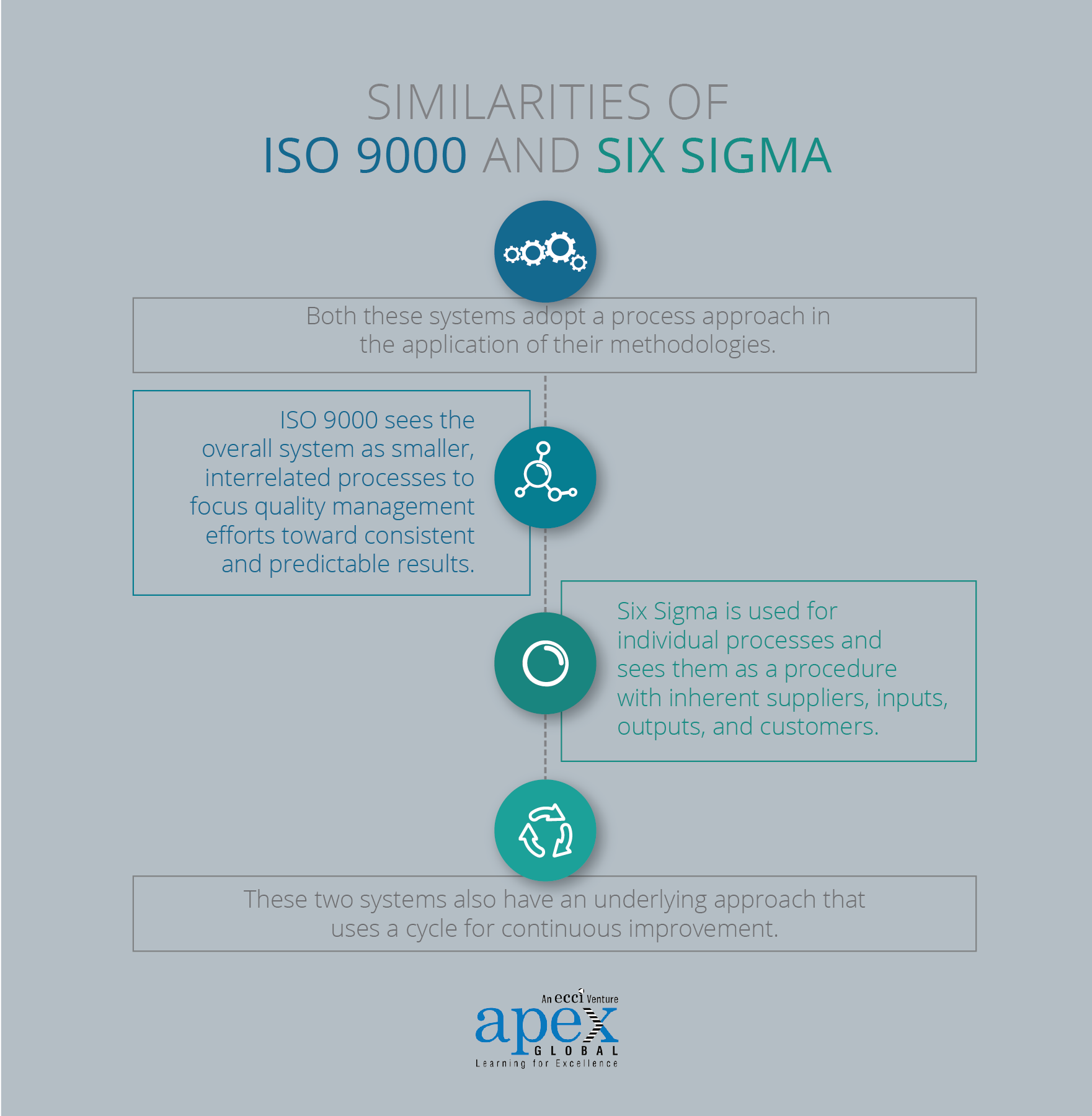ISO Standards for Six Sigma
The ISO (the International Organization for Standardization) has published a few standards due to its global popularity and attempt to standardize the process and reporting. However, the standard does not cover the DFSS (DMADV) process, only DMAIC.
You can preview more and purchase the standard by clicking here.
ISO 13053-1
Quantitative methods in process improvement - Six Sigma Part 1: DMAIC methodology
ISO 13053-1:2011 describes a methodology for the business improvement methodology known as Six Sigma. The methodology typically comprises five phases: Define, Measure, Analyze, Improve and Control (DMAIC).
ISO 13053-1:2011 recommends the preferred or best practice for each of the phases of the DMAIC methodology used during the execution of a Six Sigma project. It also recommends how Six Sigma projects should be managed and describes the roles, expertise and training of the personnel involved in such projects. It is applicable to organizations using manufacturing processes as well as service and transactional processes.
ISO 13053-2
Quantitative methods in process improvement - Six Sigma Part 1: Tools and Techniques
Describes the tools and techniques, illustrated by factsheets, to be used at each phase of the DMAIC approach.
The methodology set out in ISO 13053-1 is generic and remains independent of any individual industrial or economic sector. This makes the tools and techniques described in ISO 13053-2:2011 applicable to any sector of activity and any size business seeking to gain a competitive advantage.
ISO 18404: 2015
Quantitative methods in process improvement - Six Sigma — Competencies for key personnel and their organizations in relation to Six Sigma and Lean implementation.
There is quite a bit of debate over the qualifications for each level of Six Sigma's "belts" and the boundaries that distinguish each of them. This standard defines competencies for attaining of specific levels of competency with regards to Six Sigma, Lean, and "Lean & Six Sigma" in individuals, e.g. Black Belt, Green Belt and Lean practitioners and their organizations. Yellow Belt is not included and excludes the DFSS process.
ISO 9000 compared to Six Sigma
ISO focuses on 7 principles:
- Customers
- Leadership
- People Engagement
- Process Approach
- Improvement
- Evidence-based Decisions
- Managing Relationships


Templates, Tables, and Calculators
Search active job openings related to Six Sigma
Practice certification problems
Recent Articles
-
Process Capability Indices
Oct 18, 21 09:32 AM
Determing the process capability indices, Pp, Ppk, Cp, Cpk, Cpm -
Six Sigma Calculator, Statistics Tables, and Six Sigma Templates
Sep 14, 21 09:19 AM
Six Sigma Calculators, Statistics Tables, and Six Sigma Templates to make your job easier as a Six Sigma Project Manager -
Six Sigma Templates, Statistics Tables, and Six Sigma Calculators
Aug 16, 21 01:25 PM
Six Sigma Templates, Tables, and Calculators. MTBF, MTTR, A3, EOQ, 5S, 5 WHY, DPMO, FMEA, SIPOC, RTY, DMAIC Contract, OEE, Value Stream Map, Pugh Matrix

Site Membership
LEARN MORE
Six Sigma
Templates, Tables & Calculators
Six Sigma Slides
Green Belt Program (1,000+ Slides)
Basic Statistics
Cost of Quality
SPC
Control Charts
Process Mapping
Capability Studies
MSA
SIPOC
Cause & Effect Matrix
FMEA
Multivariate Analysis
Central Limit Theorem
Confidence Intervals
Hypothesis Testing
Normality
T Tests
1-Way ANOVA
Chi-Square
Correlation
Regression
Control Plan
Kaizen
MTBF and MTTR
Project Pitfalls
Error Proofing
Z Scores
OEE
Takt Time
Line Balancing
Yield Metrics
Sampling Methods
Data Classification
Practice Exam
... and more




